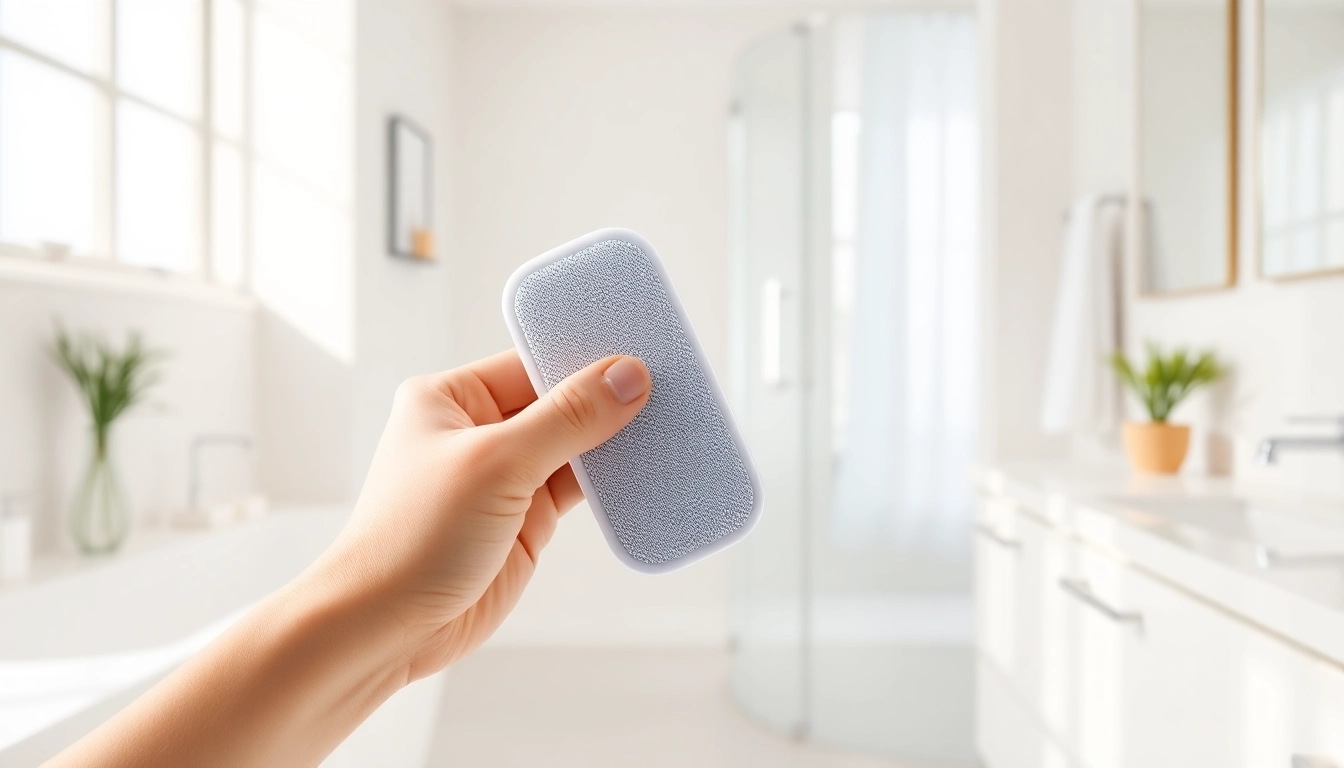Understanding Sticky Hair Removers
What is a Sticky Hair Remover?
A sticky hair remover is a specialized tool designed to efficiently remove pet hair, lint, and other debris from various surfaces. Typically featuring a simple roller design, it uses adhesive sheets or tapes that capture unwanted materials with minimal effort. These devices have become increasingly popular among pet owners due to their ease of use and effectiveness, making them a favorite in households with furry companions.
How Sticky Hair Removers Work Effectively
Sticky hair removers work on the principle of adhesion. When the sticky roller is rolled over a surface, the adhesive picks up hair and lint. The materials are then securely held on the roller until the adhesive layer is saturated or loses its stickiness. Most of these devices are designed for reusable or disposable use—some even come with replaceable adhesive rolls, making them both eco-friendly and cost-effective. The effectiveness of a sticky hair remover can depend on the quality of the adhesive, the design of the roller, and the surface texture being treated.
Benefits of Using a Sticky Hair Remover
The primary advantage of a sticky hair remover is its simplicity and efficiency. No special tools or complicated processes are involved—just roll and collect. Additionally:
- Time-Saving: Sticky hair removers can quickly clear pet hair from furniture, clothing, and car interiors, saving time for pet owners.
- Multi-Surface Use: They can be used on various surfaces, including upholstery, bedding, and clothing, making them versatile cleaning tools.
- No Mess: Unlike vacuuming, sticky hair removers do not scatter hair; they collect it directly, making cleanup quicker and less messy.
- Portable: Many sticky hair removers are compact and lightweight, making them easy to carry for on-the-go pet owners.
Choosing the Right Sticky Hair Remover
Factors to Consider When Selecting
When selecting a sticky hair remover, several factors should be considered to ensure that the chosen tool effectively meets your needs:
- Size: Depending on the area you need to clean, different sizes of rollers are available. A larger roller may be efficient for bigger surfaces, while a smaller one might be better for tight spaces.
- Adhesive Quality: The stickiness of the adhesive is crucial. Higher-quality adhesives tend to pick up more hair and hold it better without tearing.
- Material: The roller materials can vary; some are made of plastic while others have a rubberized finish for enhanced durability and efficiency.
- User-Friendliness: Ergonomic designs that are easy to grip and maneuver can significantly improve the experience of using a sticky hair remover.
Comparing Materials and Adhesives
Not all sticky hair removers use the same materials or adhesives. Some key comparisons include:
- Plastic vs. Rubber: Plastic rollers are lightweight but may not be as effective on textured fabrics. Rubberized options often grip better.
- Types of Adhesive: Removers may use single-use sticky sheets or rolls that can be replaced. Consider which type best fits your cleaning habits.
- Durability: High-quality rollers can withstand repeated use without loss of function, meaning you won’t have to replace them often.
Read Customer Reviews and Testimonials
Before making a purchase, it’s wise to check customer reviews and testimonials. Look for overall ratings, common positive remarks about effectiveness, issues with adhesion longevity, and specific surface types they perform best on. User experiences can provide invaluable insights that might not be evident through product descriptions alone.
Using a Sticky Hair Remover
Step-by-Step Guide for Optimal Use
To effectively use a sticky hair remover, follow this step-by-step guide:
- Select the Right Roller: Choose a roller size appropriate for the surface you plan to clean.
- Position the Roller: Hold the roller at a slight angle to avoid pressing too hard, which could hinder adhesive performance.
- Roll with Consistency: Move the roller across the surface in a straight, smooth motion. Avoid rolling back and forth as this can reduce effectiveness.
- Check Adhesive Status: Periodically check if the adhesive is still picking up hair effectively. Replace or clean as needed.
- Dispose of Used Sheets: If using disposable sheets, be sure to dispose of them in a manner compliant with local waste management guidelines.
Common Mistakes to Avoid
While using a sticky hair remover is straightforward, certain mistakes can limit its effectiveness:
- Pressing Too Hard: Applying excessive pressure can hinder the hair pickup ability. Let the adhesive do the work.
- Using on Wrong Surfaces: Avoid using sticky rollers on delicate fabrics that may be damaged or on rough surfaces that can wear down the adhesive.
- Ignoring Adhesive Saturation: Continuing to use a roller past its effectiveness can lead to frustration, as it will not pick up hair or lint as intended.
When to Replace Your Sticky Hair Remover
Knowing when to replace your sticky hair remover is crucial for ongoing efficiency. Common signs include:
- Reduced Adhesiveness: If the sticky sheets no longer lift hair effectively, it’s time to replace them.
- Visible Wear: Look for tears, degradation, or wear on the roller itself, which may compromise its function.
- Unpleasant Odors: If your roller starts to emit a foul smell, this can be a sign of bacterial growth, necessitating replacement.
Maintaining Your Sticky Hair Remover
Proper Cleaning Techniques
Maintenance of your sticky hair remover is essential. Here are some cleaning techniques to consider:
- Wipe Down after Use: Use a damp cloth to wipe the roller after each use to prevent hair buildup and debris.
- Store in a Clean Area: Keeping your sticky hair remover in a clean space will reduce the chance of it picking up dust or dirt when being stored.
- Replace Adhesive Sheets Regularly: Frequent replacement ensures optimal performance and cleanliness of the roller.
Storage Tips for Longevity
To keep your sticky hair remover in the best condition, consider the following storage tips:
- Store Upright: Keeping the roller upright can prevent adhesive sheets from sticking to unwanted surfaces.
- Avoid Direct Sunlight: Exposure to sunlight can weaken adhesive quality, so store it in a cool, dark place.
- Keeps Away from Pets: Prevent pets from accessing the storage area to avoid damage or accidental misplacement.
Identifying Signs of Wear and Tear
Routine checks for wear and tear are crucial for maintaining your sticky hair remover’s effectiveness. Look for:
- Frayed Edges: Any fraying along the edges of the adhesive sheets or rollers can indicate reduced functionality.
- Loss of Stickiness: Check if hair and lint are starting to slip off instead of adhering to the roller.
- Structural Damage: Check for cracks or bends in the roller casing which can compromise overall performance.
Sticky Hair Remover Alternatives
Comparative Review of Similar Products
If you find that sticky hair removers are not right for your cleaning needs, alternatives such as lint brushes, vacuum attachments, or pet grooming gloves may be effective. Here’s a quick comparison:
- Lint Rollers: Similar to sticky hair removers but often designed with different materials and adhesive strengths.
- Vacuum Cleaners: Powered models specifically designed for pet hair often offer more thorough cleaning but may be less convenient for quick clean-ups.
- Grooming Gloves: While they don’t pick up debris from surfaces, they can effectively remove loose hair directly from pets during grooming.
Benefits of Alternatives vs. Sticky Hair Removers
Alternatives can offer unique benefits:
- Thorough Cleaning: Alternatives like vacuum cleaners can often provide a deeper, more thorough clean compared to a sticky roller.
- Grooming Benefits: Grooming gloves can serve a dual purpose, providing cleaning and bonding time with your pet.
- Reusable Options: Many alternatives are designed to be more sustainable, such as washable lint brushes or gloves.
Making the Best Choice for Your Pet’s Needs
Choosing the right cleaning tool depends on your specific needs, lifestyle, and the types of surfaces you frequently clean. Consider your living situation, the number of pets you have, and how susceptible your home is to pet hair accumulation. Ultimately, the best choice is one that balances efficiency, convenience, and effectiveness while catering to your pet’s grooming needs.




